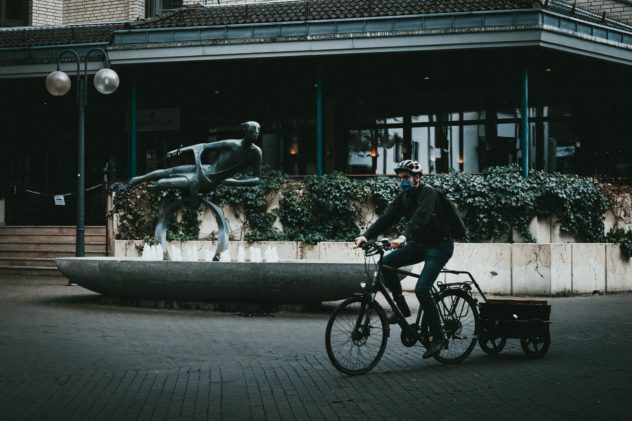Pre-Reading Questions:
- Do you travel everyday?
- What is your favorite mode of transportation?
Vocabulary:
- daily /DEY-lee/
- mile /mahyl/
- traffic /TRAF-ik/
- passenger /PAS-uh n-jer/
- none /nuhn/
[adjective] — happening on or relating to every day
Drinking coffee is part of my daily routine.
[noun] — a unit of distance equal to 1.6 kilometers
It takes 2 miles to travel to the nearest mall.
[noun] — the number of vehicles moving along roads, or the amount of aircraft, trains, or ships moving along a route
Christmas season in the Philippines has the biggest traffic.
[noun] — a person who is traveling in a vehicle but is not driving it, flying it, or working on it
Even passengers have to follow social distancing in public vehicles.
[pronoun] — not one, or not any
None of them won the lottery.
So what are the best options to survive a “rush hour peaks” outbreak? Let’s look at the list:
1. Invest on an electric scooter
E-scooters run a speed cap of 10mph and can cover two to four miles of travel. This makes them run faster than e-bikes. That said, e-scooters can be dangerous, which is why they are only allowed in private lands in the UK, but with high-visibility clothes and larger wheels, safety can be improved.
2. No parking? No problem
Vehicle owners are unlikely to use private cars for daily commuting as the traffic grows bigger, so people might use bikes or motorcycles instead. And with that kind of condition, an app that allows people to rent in-car parks might do the trick. Over 300 car parks are going to be changed completely into scooter and bicycle areas, according to Just Park’s CEO Anthony Eskinazi.
3. Grab a cab
The pandemic doesn’t stop the cab drivers from accepting calls from passengers. Companies like Uber supplies the drivers are fully equipped with protective gear such as face masks and hand gloves. They are also required to clean the insides of the cars such as the window and seats in between passengers. Lastly, Uber plans to advise the drivers to take and upload selfies to check if they are wearing masks during the ride.
4. Flying taxis
How will you get back to the office if there are no other options? Flying taxis may sound like a good idea, but not for now. Out of 175 drone taxi designs, none are operational in any country. According to Dr. Steve Wright of the University of the West of England, all we can do for now is wait, as the coronavirus will likely slow down their development rather than improve it.
True or False:
- Protective gears like face masks and gloves are needed for cab drivers during work.
- Taking cabs, flying taxis, e-scooter or even your own car are options to travel back to work.
- 175 flying taxi designs can be used worldwide.
- Almost 300 car parks are turned into facility areas.
- Electric scooters run at 10 miles per hour.
Vocabulary Check:
Complete the sentences by using the words in the box.
| daily | mile | traffic | passenger | none |
- Buses can carry up to 300 _____.
- _____ of the students failed the English test.
- Is exercise part of your _____ routine?
- I can run up to 6 _____ in less than an hour.
- Try riding a bike to avoid the large _____.
